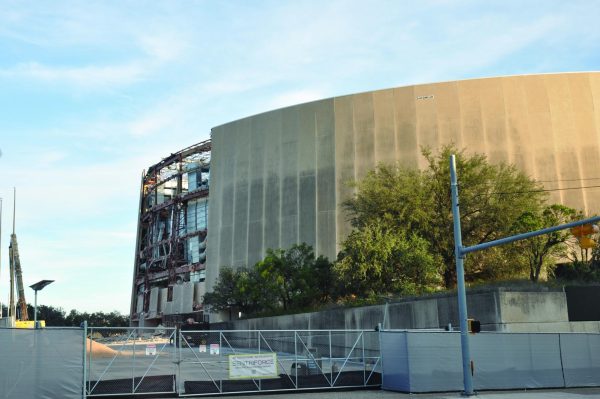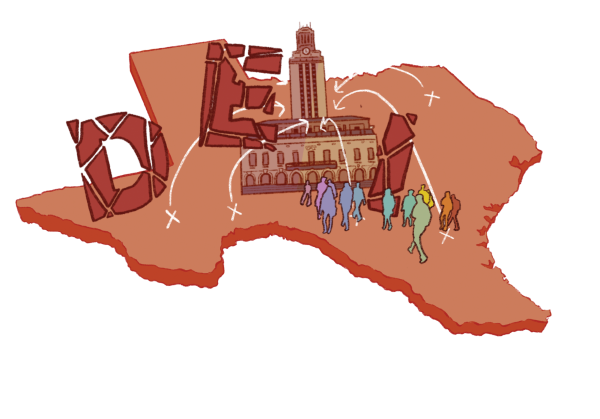Hey There Mr. Blue Sky, Will Texas Turn Blue?: A Look at Texas’ Recent and Future Political Affiliation
January 21, 2021
From the election of 1800 being thrown to the House of Representatives, which would take well over 30 ballots to decide, to Horace Greeley dying mid-election in 1872, most elections have an aspect the media tends to focus on. Many prominent publications, like Time and Politico, have written that they believe Texas is on the cusp of going blue in the future given the growth of the Hispanic population, both in the general and voting populations of cities. Former Speaker of the Texas House Joe Strauss believes that either party has a chance in Texas because “it would be wrong for either party to assume that the political status quo is unshakable.”
According to a Johns Hopkins survey, just 42% of Americans can name their local member of Congress, a number that decreases to 20% when asked to name local members of state legislatures. From 2013 to 2014, the U.S. Congress passed 352 laws and resolutions. State legislatures passed 45,564 laws and resolutions, according to the Congressional Quarterly Inc.. Judge Gamble said she is very well acquainted with how ignored and small local elections can be.
“By and large, in Travis County, the primary winner is unopposed in the general,” Judge Gamble said. “So if you don’t vote in the Democratic primary, you’re not voting for your judges…you’re not voting for a county commissioner. You’re not voting for a lot of things, but judges especially.”
According to the same Johns Hopkins survey, about a third of voters were not sure if absentee voting was an option in local races. The same proportion of voters did not know who they voted for past their governor, local legislative representatives and lieutenant governor. More than half of voters did not know if their state even had a constitution. According to Judge Gamble, this has large effects as people move up the food chain in public office.
“Most of the time, the people running for Congress first ran for something locally or worked in politics locally,” Judge Gamble said. “So if you want to control who is in that pipeline, you have to pay attention to who’s running for city council or commissioner.”
Currently, two Austin City Council districts are up for runoffs, Districts 6 and 10, which has not happened since the 10-1 system; that of one mayor and ten city council districts around the city, which was implemented in 2012. This leaves lots of room for conservative movement into this formally nonpartisan local arena typically dominated by liberals, according to Brian Ruddle, the executive director of the Travis County GOP.
According to Judge Gamble, these local elections tend to decide policy for the everyday American. However, Judge Gamble also said that is not to say that statewide elections and national elections are unimportant. While Travis County is blue, having last gone Republican in 2000 with George W. Bush, Texas is not there yet. Former political operative Carlton Carl said he was not particularly surprised about the Texas presidential results.
“That Trump won was to be expected, although I think everybody on my side had hopes that it might be otherwise,” Carl said. “However, I was surprised at what happened in certain parts of the state, particularly down in the valley.”
Three counties in the Rio Grande valley, Starr, Maverick and Zapata counties, all either flipped their results from 2016 — in the case of Zapata — or drastically decreased the Democratic lead in the area. This is surprising given the long-held assumption that the Hispanic vote would skew heavily Democratic and stay there.
Carl said that’s not the only problem for Democrats in Texas. MJ Hegar, the widely supported Democratic contender for Republican Jon Cornyn’s Senate seat, was beaten by about 10 points.
“I think Democrats have taken minority communities for granted forever,” Carl said. “My friends in politics decades ago talked about the need to learn from people…I think the error the Democrats have made is to presume that you go up the last month or two of a campaign and pay attention to Hispanics, for example, and try to get them to get them out to vote for your candidates. Oh, that’s too late.”
As much as COVID-19 has affected people’s daily lives, it might not be a large political problem at the statewide level, according to Ruddle. He said Governor Greg Abbott’s handling of the pandemic does not have as prominent a presence on the ballot.
“People love Governor Abbott,” Ruddle said. “And there’s a reason why, Governor Abbott won about seven points more voters than [Senator Ted] Cruz did that same election because even some Beto voters were saying, ‘You know what, I still trust Governor Abbott, even though I’m now in line with Beto on sending Beto to the U.S. Senate, I still feel that Governor Abbott is a good leader.’ Leadership is not a partisan issue. Leadership is an ability. It’s a drive. It’s a talent. And Governor Abbott has it.”
Even with the handling of the coronavirus pandemic, and the accusation and FBI investigation into Attorney General Ken Paxton, the Republican Party still looks strong in Texas, Ruddle said. This is quite a change from the past, when Texas was the brightest blue there was, according to Judge Gamble.
“When I was [in my teens], every state elected official in Texas was a Democrat,” Judge Gamble said. “It wasn’t until Ann Richards lost that everything went to the Republicans, and we haven’t been able to get it back statewide.”
According to Ruddle, the combination of Democrats taking Hispanic votes for granted and making policy choices that turn out Republican votes will do one thing. It will make it almost impossible to turn Texas blue.
“The reason that Texas has done so extremely well is that we’ve become a state where we focus on being business-friendly, and people vote with their feet,” Ruddle said. “People are not moving to California because of the great business climate that they offer. They’re not moving to New York. People are moving to Texas. And it’s for a reason.”









